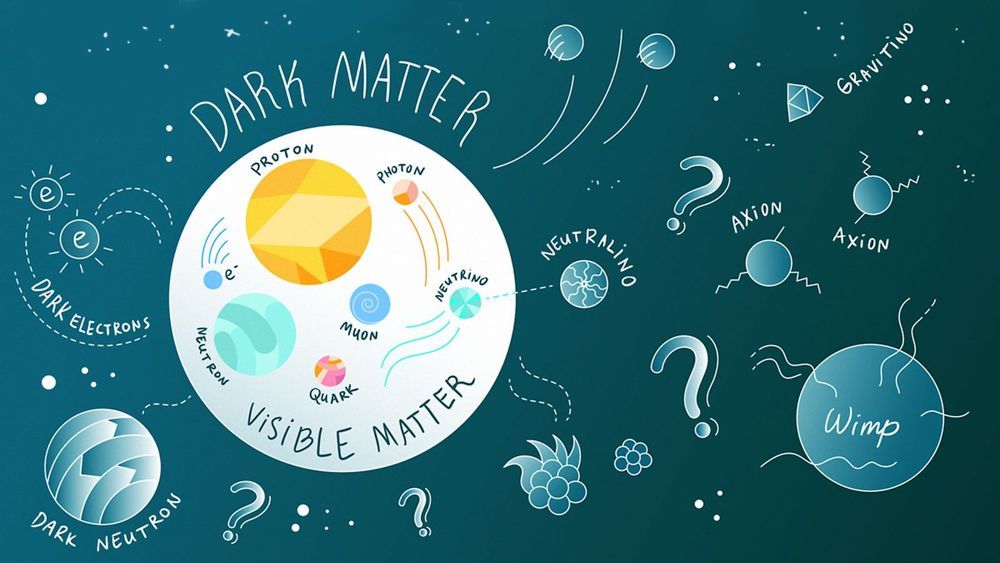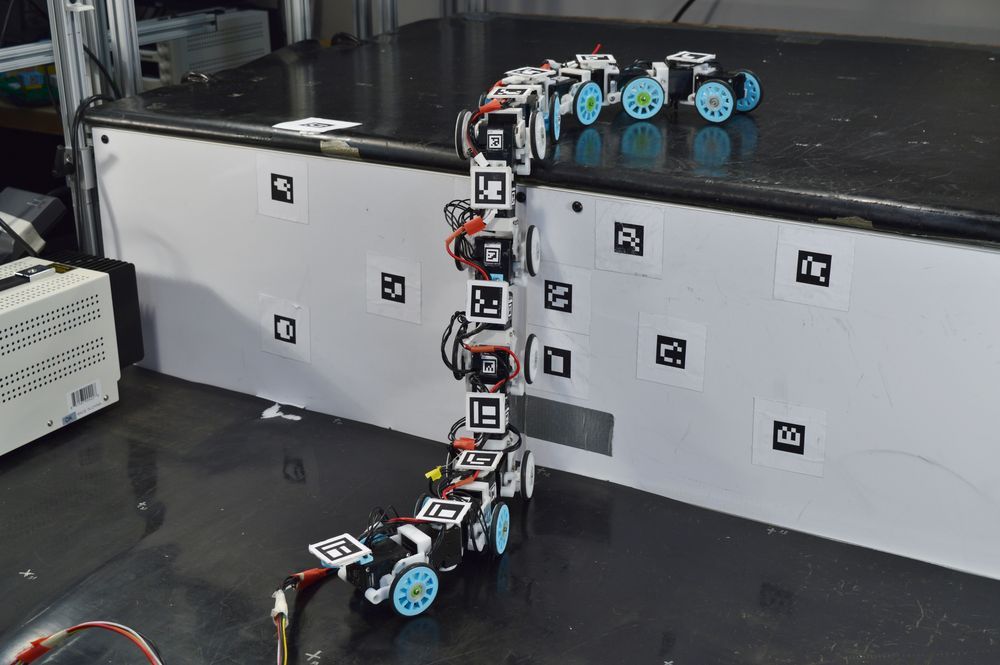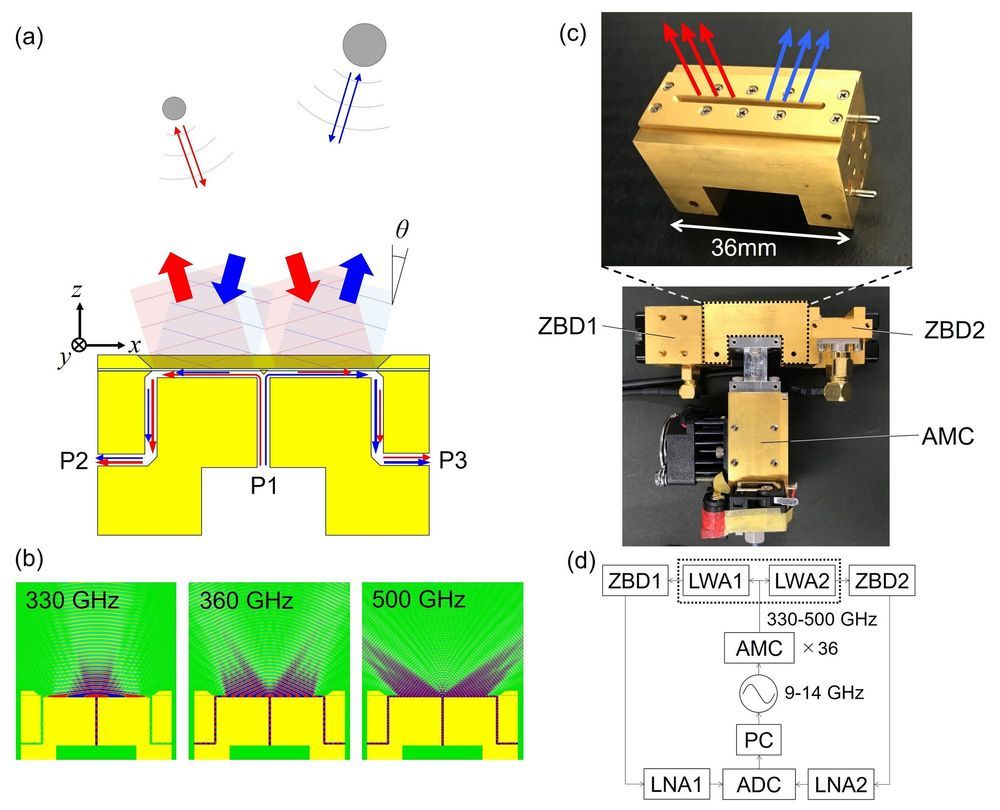How much do you really know about dark matter? Symmetry looks at one of the biggest remaining mysteries in particle physics.



Engineered living materials (ELM) are designed to blur boundaries. They use cells, mostly microbes, to build inert structural materials such as hardened cement or woodlike replacements for everything from construction materials to furniture. Some, like Srubar’s bricks, even incorporate living cells into the final mix. The result is materials with striking new capabilities, as the innovations on view last week at the Living Materials 2020 conference in Saarbrüken, Germany, showed: airport runways that build themselves and living bandages that grow within the body. “Cells are amazing fabrication plants,” says Neel Joshi, an ELM expert at Northeastern University. “We’re trying to use them to construct things we want.”
Engineered microbes shift from making molecules to materials.

Together, they founded W-Cycle, a start-up that develops compostable packaging solutions to tackle the masses of C-PET plastic used in the huge ready-meal packaging industry. Rather than producing single-use trays from plastic and aluminum, W-Cycle’s patented “SupraPulp” packaging product is based on sugarcane pulp, known as bagasse.

In a wild galaxy over half a billion light-years away, astronomers have detected molecular oxygen. It’s only the third such detection ever outside the Solar System — and the first outside the Milky Way.
Oxygen is the third most abundant element in the Universe, behind hydrogen (naturally) and helium. So its chemistry and abundance in interstellar clouds are important for understanding the role of molecular gas in galaxies.
Astronomers have searched for oxygen again and again, using millimetre astronomy, which detects the radio wavelengths emitted by molecules; and spectroscopy, which analyses the spectrum to look for wavelengths absorbed or emitted by specific molecules.
Violent Detonations
Engineers have long suspected such a design could revolutionize the fuel efficiency of modern engines, but until now, there was one major problem.
“We have tons of data about these engines, but we don’t understand what is going on,” Koch admitted.

Robotic spacecraft will be able to communicate with the dish using radio waves and lasers.
Surrounded by California desert, NASA officials broke ground Tuesday, Feb. 11, on a new antenna for communicating with the agency’s farthest-flung robotic spacecraft. Part of the Deep Space Network (DSN), the 112-foot-wide (34-meter-wide) antenna dish being built represents a future in which more missions will require advanced technology, such as lasers capable of transmitting vast amounts of data from astronauts on the Martian surface. As part of its Artemis program NASA will send the first woman and next man to the Moon by 2024, applying lessons learned there to send astronauts to Mars.
Using massive antenna dishes, the agency talks to more than 30 deep space missions on any given day, including many international missions. As more missions have launched and with more in the works, NASA is looking to strengthen the network. When completed in 2½ years, the new dish will be christened Deep Space Station-23 (DSS-23), bringing the DSN’s number of operational antennas to 13.

Researchers at Northern Illinois University and the U.S. Department of Energy’s (DOE) National Renewable Energy Laboratory (NREL) in Golden, Colorado, are reporting today (Feb. 19) in the journal Nature on a potential breakthrough in the development of hybrid perovskite solar cells.
Considered rising stars in the field of solar energy, perovskite solar cells convert light into electricity. They’re potentially cheaper and simpler to produce than traditional silicon-based solar cells and, on a small scale in laboratory settings at least, have demonstrated comparable efficiency levels. But key challenges remain before they can become a competitive commercial technology.
One major challenge is the use of lead. Most top-performing hybrid perovskite solar cells contain water-dissolvable lead, raising concerns over potential leakage from damaged cells.

Engineers from Johns Hopkins have looked to how snakes move around to inform the design of a nimble new robot. It is hoped that the development could lead to search and rescue bots able to tackle all kinds of obstacles with ease.
“We look to these creepy creatures for movement inspiration because they’re already so adept at stably scaling obstacles in their day-to-day lives,” said senior author on the study, Chen Li. “Hopefully our robot can learn how to bob and weave across surfaces just like snakes.”
Observing how a variable kingsnake climbed up steps of varying height and having different surfaces, the researchers noted that the snake combined lateral undulation with cantilevering. When faced with a step, the reptile seemed to partition its body into three – the front and rear both moved back and forth while the middle section remained stiff.

Researchers at Keio University and the National Institute of Information and Communications Technology (NICT) in Japan have recently introduced a new design for a terahertz wave radar based on a technique known as leaky-wave coherence tomography. Their paper, published in Nature Electronics, could help to solve some of the limitations of existing wave radar.
The use of radar, particularly millimeter-wave radar, has increased significantly over the past few years, particularly in the development of smart and self-driving vehicles. The distance and angular resolutions of radar are typically limited by their bandwidth and wavelength, respectively.
Terahertz waves, which have higher frequencies and shorter wavelengths than millimeter waves, allow for the development of radar systems with a smaller footprint and higher resolution. As wavelengths become shorter, however, the attenuation resulting from wave diffraction rapidly increases.